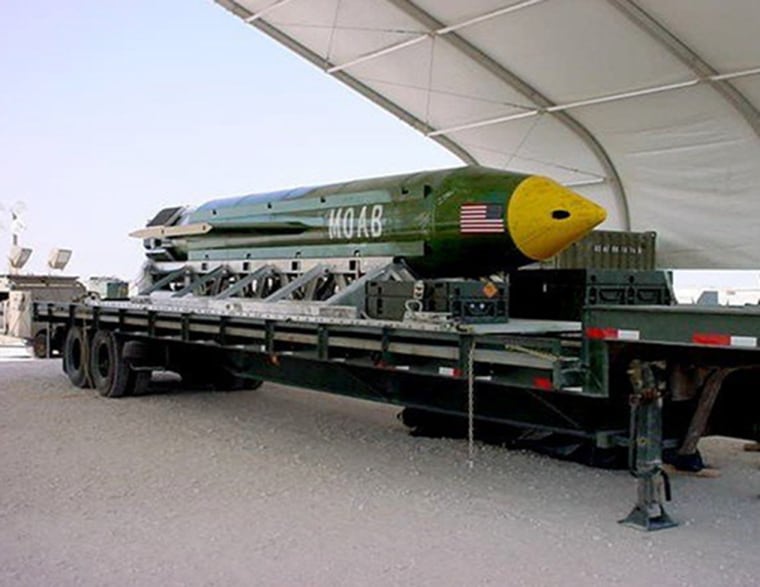The U.S. military released video Friday of the moment the largest non-nuclear bomb in its arsenal ever used was dropped to obliterate an ISIS tunnel complex in eastern Afghanistan.
The 30-second clip is in grainy black and white. The 21,600-pound weapon — a GBU-43 also nicknamed the "mother of all bombs" — swoops down from the sky into the hilly terrain, creating a major blast with an apparent shockwave. A colossal cloud of smoke climbs quickly into the sky.
Thursday night's attack is believed to have killed 36 ISIS fighters and no civilians, according to Afghan's defense ministry. The country remains home to an estimated 600 to 800 ISIS fighters, with most of them in Nangarhar province.
President Donald Trump hailed the operation as "another successful job" late Thursday, but did not answer directly when asked by a reporter if he had authorized the use of the behemoth bomb.
Related: Why America Dropped ‘Mother of All Bombs’ on ISIS in Afghanistan
"We have given [the Pentagon] total authorization, and that's what they're doing and frankly that's why they've been so successful lately,” he told reporters. The operation came a week after the U.S. launched cruise missiles at Syria in response to a chemical attack on civilians.
The Air Force's GBU-43 has not previously been deployed on the battlefield, but is now the most powerful bomb used since the U.S. dropped the atomic bomb on Japan, in 1945.

Pentagon officials say they were targeting a cave and tunnel system in the Achin district of Nangarhar — a province that was once a hideout for Osama bin Laden after 9/11.
While the operation was intended to strike at the heart of an ISIS "safe haven," the U.S. military said, it was also "designed to minimize risk to Afghan and U.S. Forces conducting clearing operations in the area."
